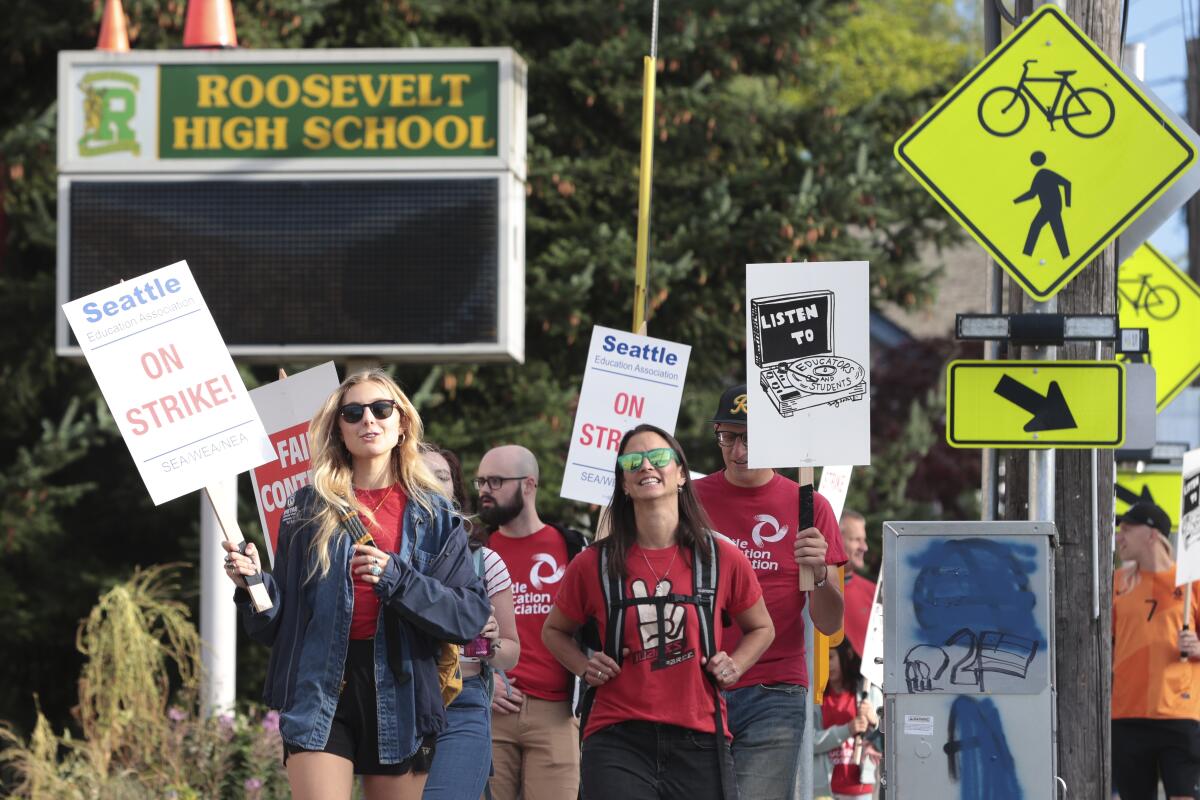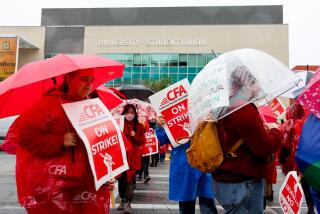Seattle teachers on strike over pay and staffing issues

SEATTLE — Red-shirted teachers and staff in Seattle Public Schools took to the picket line instead of the classroom on what was supposed to be the first day of school Wednesday, striking for the first time since 2015 over issues that include pay and educational support for students who have struggled with years of pandemic learning.
Contract talks, which began months ago, continued. It was unclear how long the walkout would last, leaving many parents scrambling for alternative childcare.
Striking teachers stressed their main concern was educational and emotional help for students, especially those with special needs or learning difficulties.
“I started teaching right at the start of COVID, as we went into online school, a big tumultuous time when students needed more resources and help to do well,” said Kara Alden, an eighth-grade English teacher picketing outside Jane Addams Middle School in north Seattle. “We’re back in person and they still need those supports, in social-emotional health, for our multilingual learners to get the education they deserve. The district is not providing those supports.”
Seattle Public Schools has sought to increase the amount of time disabled children spend in general education classrooms, and also to eliminate ratios dictating how many students may be assigned to each special education professional. The district says that would allow it to focus on student needs rather than fixed staffing ratios, but the Seattle Education Assn. worries it would leave general education teachers with less in-class support.
Tony Renouard, a veteran social studies teacher at Nathan Hale High School, said the union shares many of the district’s goals when it comes to such inclusionary teaching, but it requires a lot of instructional assistants to do it well. His school has used an inclusionary classroom model for about 25 years, he said, and he relies on classroom assistants to make sure special education students are getting what they need.
“The money can be negotiated,” he said. “The big sticking points are the supports for kids.”
Districts around the country have faced labor challenges as the pandemic put extraordinary stress on teachers and students alike. An infusion of federal stimulus money has helped stabilize school district budgets, and teachers unions have sought to improve pay, resources and working conditions after a difficult few years.
Many districts, though, have fretted about using short-term funding to pay for long-term costs, such as increased salaries.
David Knight, an assistant professor of education finance and policy at the University of Washington, said adequate salaries and good working conditions make schools better for everyone — but figuring out how to structure those salaries to retain good teachers and support new ones is a challenge.
“Educator dissatisfaction with working conditions is not something that started yesterday,” he said. “They want safe and supported working conditions, they want a voice in school district policy, they want a livable salary. What people sometimes forget is administrators want those things too.”
Teachers in Columbus — Ohio’s largest school district — last week ended a brief strike, agreeing on a package that included 4% raises, plans for building improvements, reduced class sizes and innovative paid leave benefits.
In Denver, marathon bargaining sessions resulted last week in a tentative agreement for an 8.7% raise for educators, a higher salary for first-year teachers, and more money from the district for health insurance costs.
Teachers in Minneapolis, Chicago and Sacramento walked out earlier this year before securing new contracts.
And in the Seattle suburb of Kent, the teachers union said Wednesday it had reached a tentative agreement with the district to end a strike that had delayed the start of school since Aug. 25.
More to Read
Sign up for Essential California
The most important California stories and recommendations in your inbox every morning.
You may occasionally receive promotional content from the Los Angeles Times.










